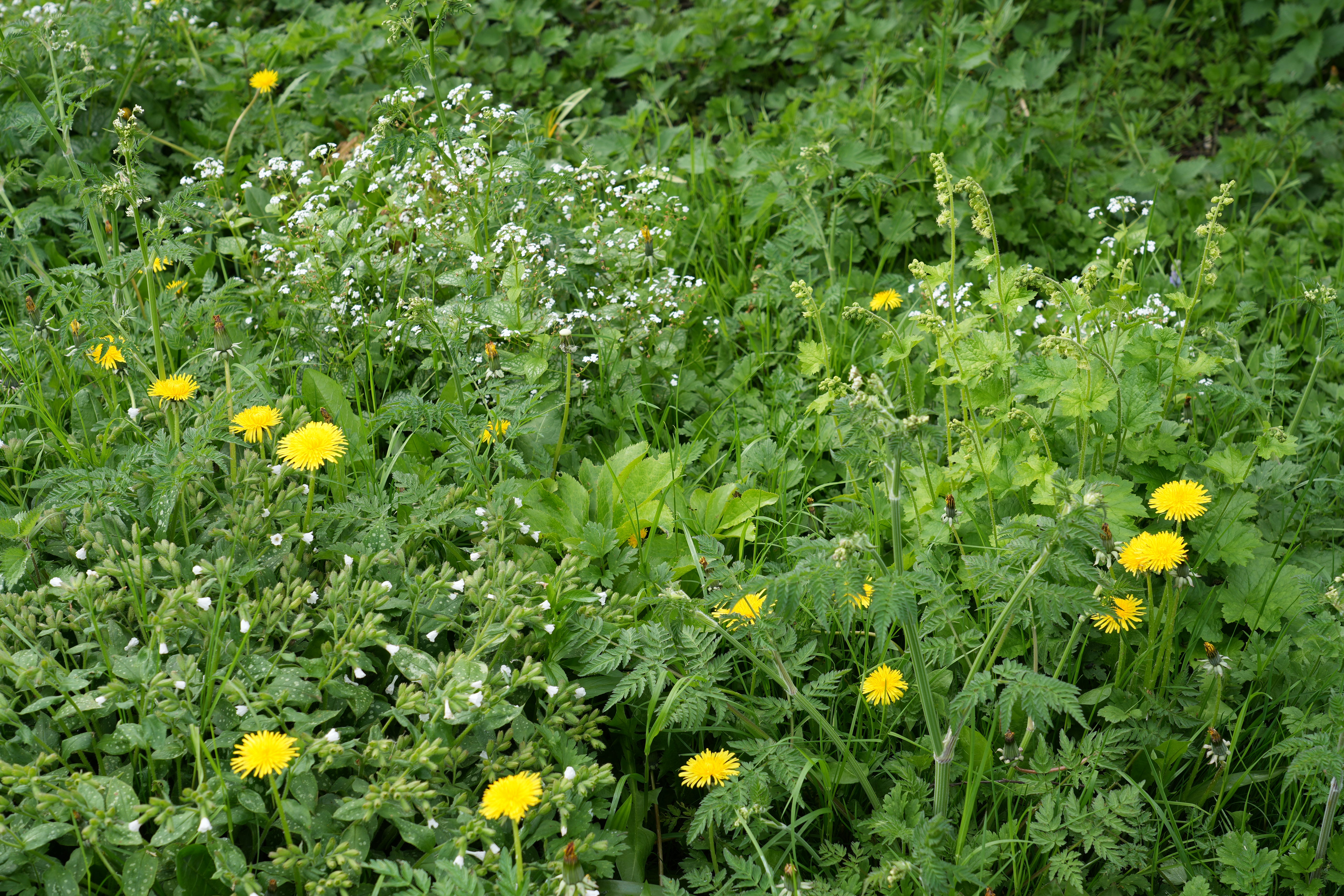Plant vigour ratings
How and why the RHS and Kew could collaborate

I’d like to propose the idea that the RHS and Kew (and potentially others) could work together on plant vigour ratings to help gardeners and ecologists understand plants better before planting or managing them.
I’ve long thought this information would be helpful when designing modern plant communities, suggesting it for the first time in Gardens Illustrated a couple of years ago. I later emailed the idea to the RHS and would like to share it with you all now for discussion. It’s just the seed of an idea and needs much more thought, smarter minds than mine and a lot of shaping, but I think it has potential and would be worthwhile. What do you think?
The RHS is just brilliant for producing data on plant height, width, preferred conditions and more. This helps us understand what a plant wants to be and where it prefers to go. But as the years go on, I realise the data I use as much, if not more exists only in my head: plant vigour.
Traditional gardening, where we plant stuff in a simple arrangement will continue, but the primary future of all gardening is plant communities. From ornamental planting to edible planting, growing plants in a way that reflects natural plant behaviour in grasslands, woodlands and other habitats is the inevitable direction of travel.
Think managing a meadow and how plants jostle together, but for every area of your garden and at all different sizes. From meadow plants, to bigger perennials, shrubs and trees.
A plant community involves planting where we still have a guiding hand in the species and look, particularly at the start, but are much less concerned about exact placing and maintenance. The idea is that the plants look after themselves. This makes sense for us, it makes sense for our soil as there is less disturbance and it makes senes for wildlife because it has time to get used to a stable habitat.
The problem with plant community gardening is that it is complex for beginners, requiring a deep knowledge of conditions of sites around the world and of plants that are suitable for that particular spot. It’s not just about right plant right place anymore, it is also about matching plant vigour. That is what I spend most of my time doing in design, making decisions about plant size and vigour to ensure the plants I suggest for a plant community are well balanced, to grow longterm in equilibrium without one suffering and another swamping.
In ecology and wild land management, plant vigour is also an important topic. I don’t like the term “invasive plants” (though I understand and accept its use) because I think it is a distraction from the main issue; what we are really talking about is plant vigour and the way an introduced plant, such as Himalayan balsam in the UK, can outcompete so many other plants disrupting wild ecosystems. This is partly because of a lack of natural controls - there are few insects and diseases in the UK that affect Himalayan balsam - but largely due to its vigour in particular situations where it will outcompete less vigorous smaller plants. Harming all the life that relied on that complex and stable ecosystem.
Ecologists and gardeners (I’ve been in plant trials where plant vigour and invasiveness are taken into account) are very aware of vigour and the potential risk of new or existing plants becoming too vigorous. These plants can escape into the wild causing issues with ecosystems, particularly as our climate changes, changing the behaviour and vigour of some plants that may have been well behaved. Gardeners and ecologists are much more aware of this now than Victorian times when most problematic plants spread into the wild, so I feel new introductions are less likely, but having the data on vigour would really help.
Plants can be given vigour ratings based on existing knowledge. Taking into account things like size, growth rate, shade, speed of replication, method of spread and size of spread. As a gardener and designer, I have a very good sense of the vigour of most plants in grown in British gardens and lots in the British wild. Using today’s database technology, the RHS and Kew could begin to work together to make best estimates at the vigour of all plants - and of course, databases can be adjusted easily as new data and knowledge comes to light.
It’s important to judge plant vigour on specific locations and areas too. One plant, such as herb fennel or Verbena bonariensis, may be very vigorous at spreading by seed in the drier southern counties of the UK, but struggle to even survive winter in the northern, wetter and colder counties of the north and Scotland. We have the knowledge and technology today to be smart and targeted.
Obviously plant vigour can change based on the conditions, which is the beauty of today’s database technology, it allows us to apply layers of information for bespoke advice. A database of plant vigour would allow the information of a plant to be adjusted based on the conditions of where it will be planted. For example, Eupatorium atropurpureum could be designated as 3/5 vigorous in sunny wet soils, but would drop to a 1/5 in sunny dry soils because we know it needs moisture to thrive. Salvia microphylla would be a 4/5 vigorous, though well-behaved shrub in full sun and nutritious dry soils, but drops to 1/5 in overly wet soil or shade.
I’ve worked with mass databases in my previous career and I promise in the hands of data and tech experts they’re simpler than they sound). And most growers have a strong sense of what plant vigour is in different conditions, giving us a good knowledge base to start from.
From a gardener’s perspective or someone planning to improve a wild patch in your community - working with wild plants - you wouldn’t need to worry about all of the database stuff. What we would be able to do is enter in the conditions of our gardens or the land, and then be presented with the best plants for it, which we could then filter by different matching plant vigour ratings. Giving us all the best shot at a new planting being successful, better for wildlife and lower maintenance.



As a small nursery proprietor and gardener with a mission to inspire customers to use plants more adventurously and to think about them in three and four dimensions and to get rid of the bark mulch, I like the way you are thinking about this. One component I would add is root systems. One of the ways that plants are able to grow in a community is different root systems utilizing different depths of soil in different ways. So sure, a meadow of hearty customers like Eutrochiums, Helenium autumnale and Monarda fistulosa, all of which would rate high on your scale of strong growers in a damp sunny meadow, is one way to make a choice, but if the “why” of the ability for certain plants to co-exist with respect to root structure was front and center in plant descriptions, that would also go a long way to help gardeners make successful plant combinations. Thank you for getting me thinking!
Thank you Jack ,
A very important consideration when designing a plant scheme especially for non gardeners but it’s a slippery concept. In my experience plant vigour can change over time largely dependent on weather conditions. This last wet winter here in Hertfordshire has increased the vigour of many plants in my garden notably Helianthus ‘Lemon Queen’ which has romped way unlike in previous years. Oh well, plenty to pass on !